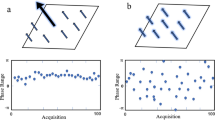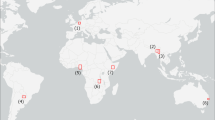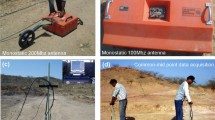Abstract
Differential Interferometry Synthetic Aperture Radar (D-InSAR) technology is an important means of mining subsidence monitoring, but due to the influence of environment and ground objects, the phase unwrapping of Synthetic Aperture Radar (SAR) data exceeds the set threshold value, resulting in the “void field” phenomenon in the output differential interferogram, so the Line of Sight (LOS) deformation value of the complete observation period cannot be extracted. In response to this problem, Reverse Geocoding Nonlinear Autoregression Neural Network (RGC-NARNN) and Reverse Geocoding Long Short Term Memory (RGC-LSTM) models were constructed to repair the void field, and were compared. The subsidence surface is simulated by self-affine fractal and dynamic Knothe function. Through the simulation experiment, the RGC-NARNN model predicts the root mean square error of the two kinds of subsidence surface are 1.07 mm and 2.20 mm, respectively. RGC-LSTM model predicts the root mean square error of the two kinds of subsidence surface are 4.21 mm and 241.78 mm, respectively. The preliminary judgment may be that the small amount of data causes the poor prediction results of the RGC-LSTM model, so RGC-NARNN was selected for subsequent experiments. The RGC-NARNN model was used to repair the actual “void field” of the two differential interferograph from June 25, 2017 to July 19, 2017 and from November 16, 2017 to November 28, 2017 in a coal mining panel in Huainan, China. Compared with the actual value, the root mean square error is 1.87 mm and 1.10 mm, respectively. The repair effect meets the requirements of accuracy.









Similar content being viewed by others
References
Ali S, Yameqani et al (2019) Evaluating a location distortion model to improve reverse geocoding through temporal semantic signatures sciencedirect. Comput Environ Urban Syst 77:101349–101349
Chen B (2015) A study on InSAR for subsidence monitoring in mining area. China University of Mining and Technology
Chen Y, Chen L (2005) Fractal geometry. Seismological Press, Beijing
Chen L, Zhang L, Tang Yet al. (2018) Analysis of mining-induced subsidence prediction by exponent Knothe model combined with INSAR and leveling. In: Proceedings of the ISPRS Technical Commission III Midterm symposium on “Developments, technologies and applications in remote sensing”, p 7
Dove of Peace Studio (2003) OpenGL advanced programming and visualization system development—system development, 2nd edn. China WaterPower Press, Beijing
Fan H-d, Wei G, Yong G, Xue J-q, Chen B-q (2014) A model for extracting large deformation mining subsidence using D-InSAR technique and probability integral method. Trans Nonferrous Met Soc China 24(4):1242–1247
Ge Y (2016) Probabilistic hydrology forecasting based on NAR dynamic neural network posterior information. Northeast Agricultural University
Guoqing H, Lun Y, Gengdi L et al (1991) Mining subsidence science. China University of Mining and Technology Press, Xuzhou
Jörges C, Berkenbrink C, Stumpe B (2021) Prediction and reconstruction of ocean wave heights based on bathymetric data using LSTM neural networks. Ocean Eng. https://doi.org/10.1016/J.OCEANENG.2021.109046
Kingma DP, Ba J (2014) Adam: a method for stochastic optimization. CoRR. http://arxiv.org/abs/1412.6980
Li K, Gao J, Song J et al (2020) Forecast of short-term metro passenger flow based on NARNN model. J Wuhan Univ Technol (transp Sci Eng) 44(01):103–107
Qinghao L, Yonghong Z, Min D et al (2021) Time series prediction method of large-scale surface subsidence based on deep learning. Acta Geodaetica Et Cartographica Sinica 50(03):396–404
Shi C (2010) The study on dynamic prediction theory of mining subsidence and it’s parameters. Henan Polytechnic University
Valipour M (2016) Optimization of neural networks for precipitation analysis in a humid region to detect drought and wet year alarms. Meteorol Appl 23(1):91–100
Wang L, Zhang X (2017) Retrieving surface movement and deformation induced by coal mining based on a single D-InSAR pair. Chin J Rock Mech Eng 36(04):865–873
Xiuxiu H, Guoman H, Zheng Z et al (2017) A void hole filling method for airborne InSAR DEM based on FBM. Sci Surv Mapp 42(06):137–143
Yang Z, Zhu J, Li Z et al (2015) Analysis of law of kinematic mining subsidence by integrating in SAR and leveling measurements. J Central South Univ (sci Technol) 46(10):3743–3751
Yunneng CYY (2006) Interferometric signal simulation based on fractal modeling. J Beijing Univ Aeronaut Astronaut 07:807–810
Zefa Y, Zhiwei L, Jianjun Z et al (2016) Insar-based model parameter estimation of probability integral method and its application for predicting mining-induced horizontal and vertical displacements. IEEE Trans Geosci Remote Sens 54(8):4818–4832
Acknowledgements
The research is supported by the Youth Project of Natural Science Foundation of Anhui Province (No. 2008085QD178); Key Natural Science Projects of Anhui Provincial Department of Education (KJ2020A0311); Open Fund Project of Coal Industry Engineering Research Center of Mining Area Environmental And Disaster Cooperative Monitoring in 2020 (KSXTJC202005).
Author information
Authors and Affiliations
Corresponding author
Additional information
Publisher's Note
Springer Nature remains neutral with regard to jurisdictional claims in published maps and institutional affiliations.
This article is part of a Topical Collection in Environmental Earth Sciences on Deep learning for earth resource and environmental remote sensing, guest edited by Carlos Enrique Montenegro Marin, Xuyun Zhang and Nallappan Gunasekaran.
Rights and permissions
About this article
Cite this article
Tan, H., Yu, X., Fang, X. et al. Repair of SAR data void field based on RGC-NARNN model. Environ Earth Sci 81, 82 (2022). https://doi.org/10.1007/s12665-022-10181-7
Received:
Accepted:
Published:
DOI: https://doi.org/10.1007/s12665-022-10181-7




